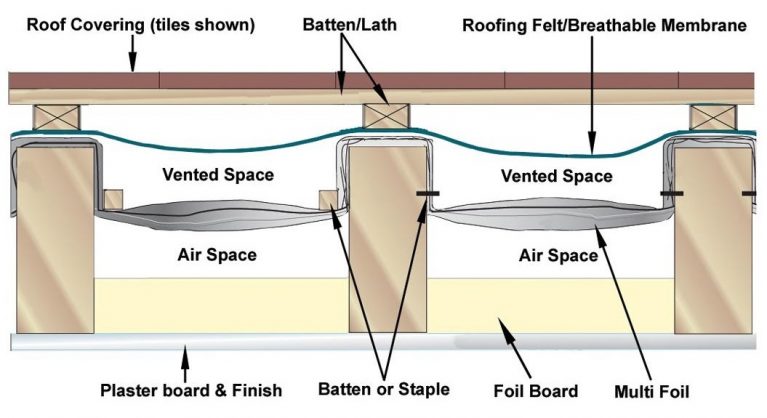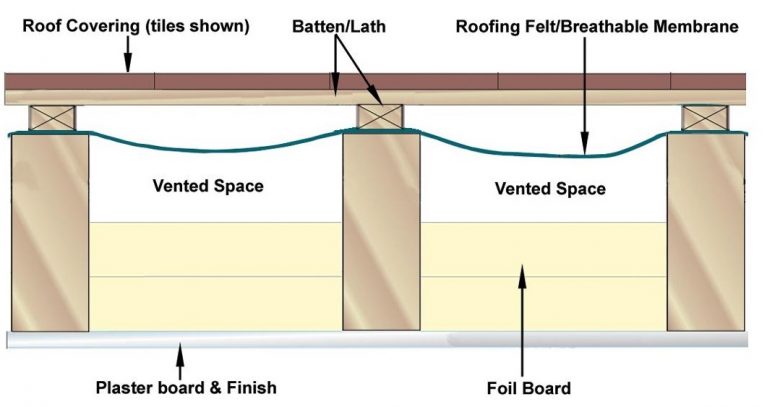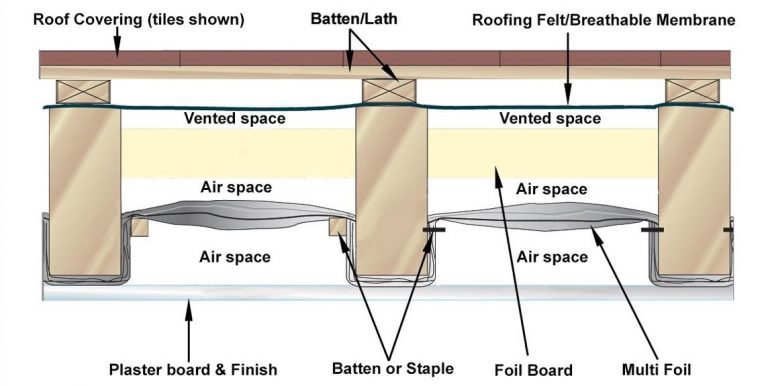What is Warm Roof Under Rafter?

In the United Kingdom, the most common choice for many years when constructing or replacing a roof was to install a cold roof. However, in the past two decades, there has been a shift to warm roofs now becoming the most popular choice of roofers. There are many key benefits of a warm roof, especially with the United Kingdom’s climate.
In this Wonkee Donkee guide, our experts talk you through what are warm roofs and cold roofs and the benefits and drawbacks of each of these options.
What are Fascia Boards?
If you are completely unfamiliar with roofing terminology then the first thing that you will need to know is what we mean by rafter. The definition of rafter is the main structural component of a roof.
This is typically made from timber or steel depending on what material has been used to construct the rest of the property. Rafter runs from the external wall of the building up to the roof’s ridge or hip. The structure of rafter is reinforced by being laid side by side which allows it to be strong and stable ready for the covering such as tiles to be laid on top.
What is the difference between a warm roof and a cold roof?
A common misconception is that a warm roof includes a layer of insulation whilst a cold roof does not. However, the real difference is where the layer of insulation sits as opposed to its inclusion.
A warm roof includes an insulation layer above the rafters whilst a cold roof has the insulation layer between the rafter. This may seem like only a small difference but the positioning of the insulation leads to a change in properties of the roof and its circulation of air.
Warm Roof

As we just mentioned, warm roofs contain an insulation layer that sits above the rafters and below the waterproof breathable membrane. Positioning the insulation here has many benefits including allowing for excess moisture from condensation to escape the roof. This is important in order to prevent issues like damp or mould and mildew which is untreated can lead to rot and compromise the structure of the roof.
The best thing about a warm roof is that it does this, without allowing heat to escape the property due to the layer of insulation above the rafters. This means that a well-built warm roof may not require other ventilation systems and also provides a much better level of thermal insulation to the whole property. Warm roofs also tend to be easier to install as long as the condition of your rafter and rooftop is good. Installing larger pieces of insulation over the existing roof is much easier than cutting to size or stuffing insulation into the gaps between rafter.
Advantages of Warm Roofs
There are 3 key advantages to installing a warm roof for your property. The first is how much easier it is to install in comparison to cold roofs. This is due to the fact the insulation is laid on top of the roof deck. This means you can use larger sections of insulation without having to cut them to fit in between rafters.
The second advantage is that it provides better coverage to the rafter and thus retains more heat within the property. Due to the insulation of the warm roof sitting above the rafter and being continuous, it provides an even barrier to stop heat escaping. In comparison, cold roofs insulation has many gaps surrounding the rafter which allows heat to escape.
Disadvantages of Warm Roofs
Although warm roofs are increasingly becoming the popular choice for properties, that does not mean that there is no drawback. Saying this, there is only one main drawback to warm roofs if they are installed correctly. This drawback is the increased height that the insulation layer adds to the roof. It is only a small issue but it is something that you need to consider when constructing or replacing a roof. This extra height does however make a warm roof an unsuitable option for some properties.
Cold Roofs

On the other hand, we have cold roofs. As we touched on above, these are roofs which have insulation in between the rafters. The reasoning for this to begin was due to the fact that these spaces are empty and the logically inputting insulation here provided a barrier to stop heat escaping without increasing the size of the roof.
In the design of cold roofs, there is normally a 50mm gap left between the layer of insulation and the deck of the roof above. This is deliberately left in order to allow some air to circulate and help ventilate the roof. The drawback of this is that it allows for warm air to escape and cold air to enter which lowers the overall temperature of the property.
Advantages of Cold Roofs
Cold roofs have been around for decades and this is due to the fact that they are effective and have their advantages. The first advantage to cold roofs is that you can easily install them whilst constructing the roof as you simply fill in the rafter gaps with insulation as you go along. This saves having to build the roof first and then install the insulation on top of the roof deck as with warm roofs.
The second advantage is that putting the insulation in between gaps in the rafter makes use of this otherwise unused space. This links in with another advantage in that cold roofs do not require extra space in order to be installed, unlike a warm roof. This means that you do not have to raise the roof any higher and you can maintain the building’s profile.
Disadvantages of Cold Roofs
As you would expect from the decrease in popularity, there are disadvantages to installing a cold roof. The first disadvantage is the lower thermal efficiency in comparison to warm roofs. Installing insulation between the rafters leaves gaps and extra air space where hot air will naturally escape. Warm roofs are more thermally efficient as they have a full insulating layer covering the top of the rafter which prevent this leakage of hot air.
The second and final disadvantage to cold roofs come from the way that they are installed. Due to the fact that installation sits between the rafter, if there are any issues with the roofing structure you will most likely have to remove and replace the insulation in order to gain access. Int he long term this can be more expensive and mean that basic fixing jobs take a much longer time period.






